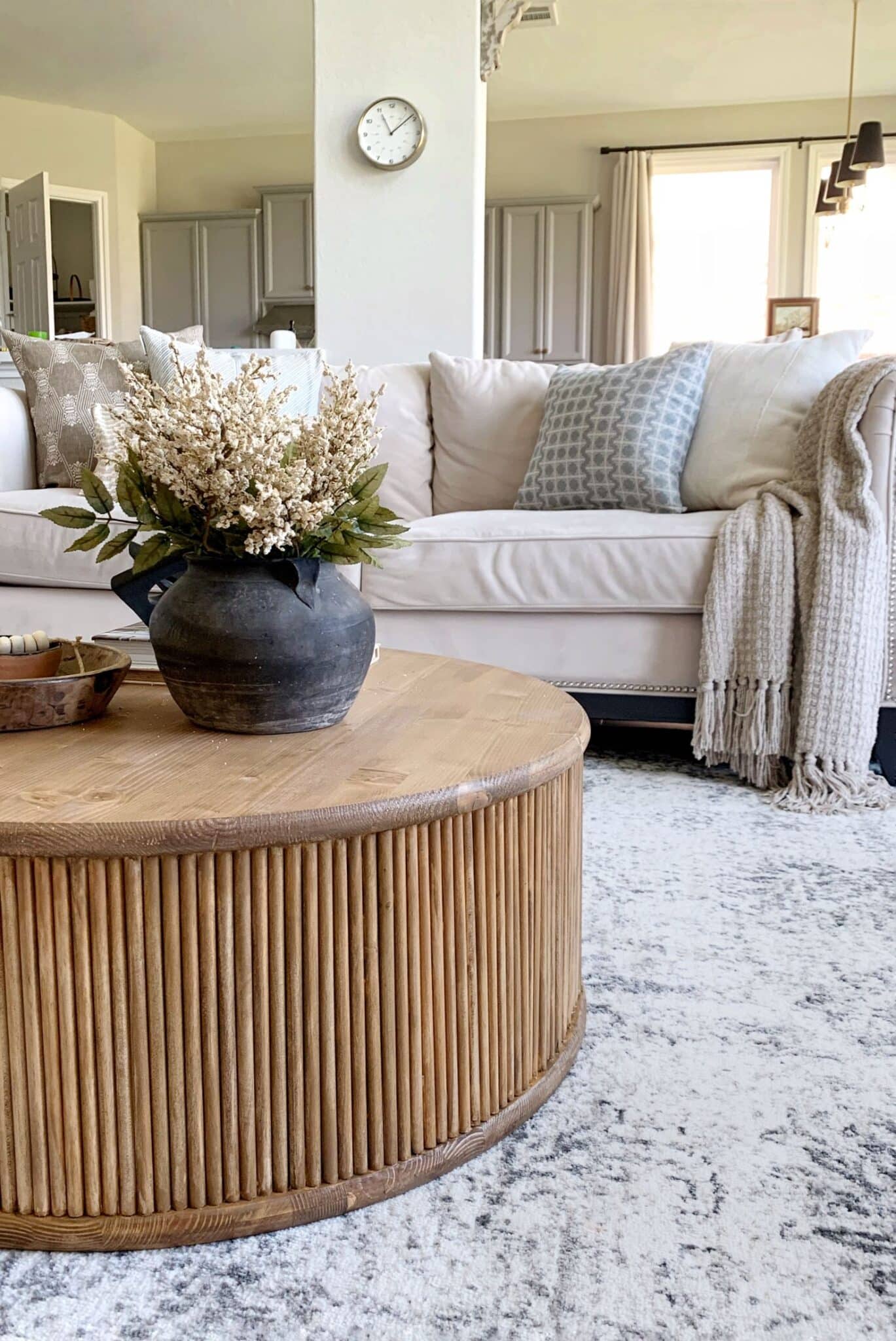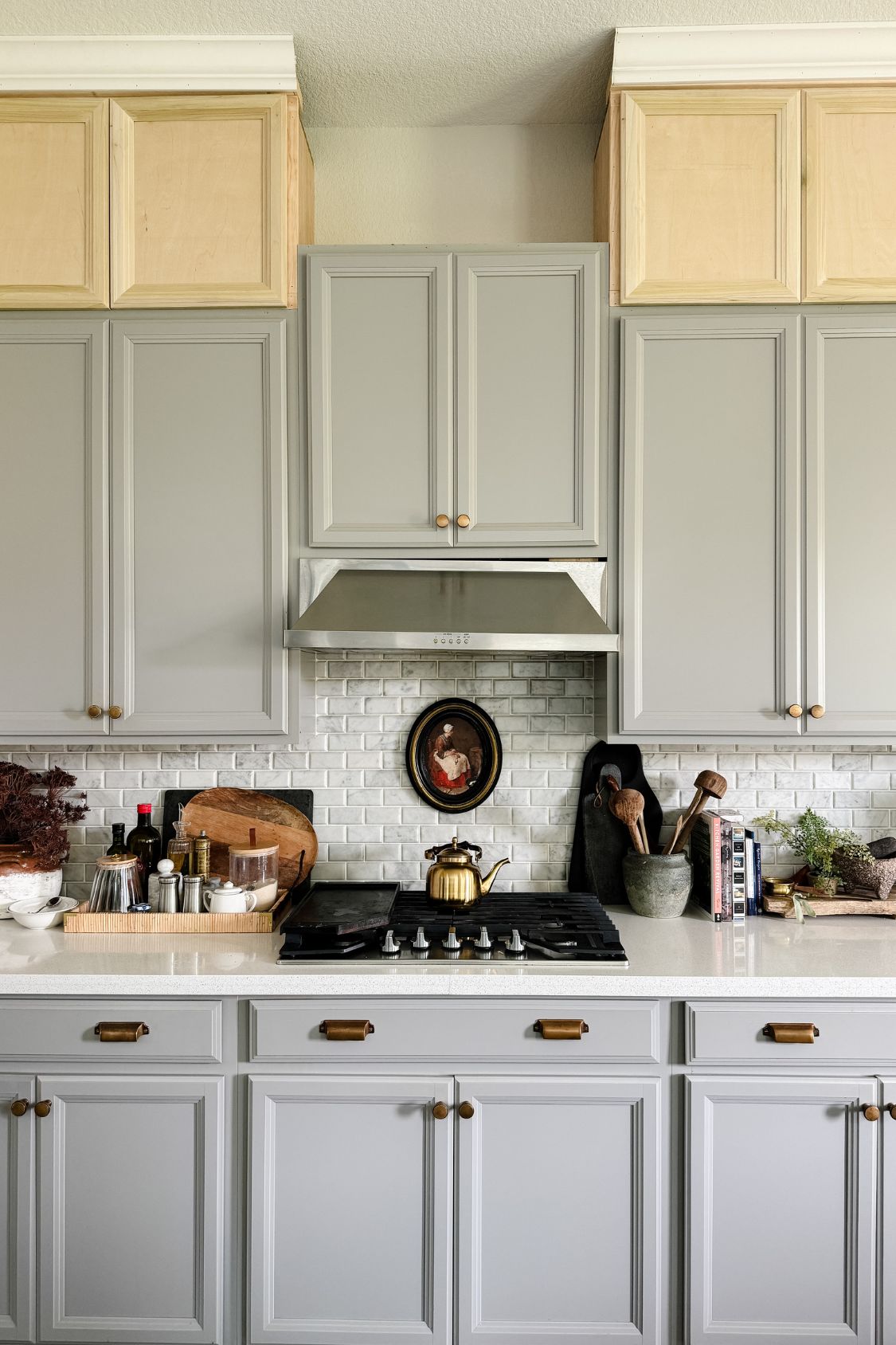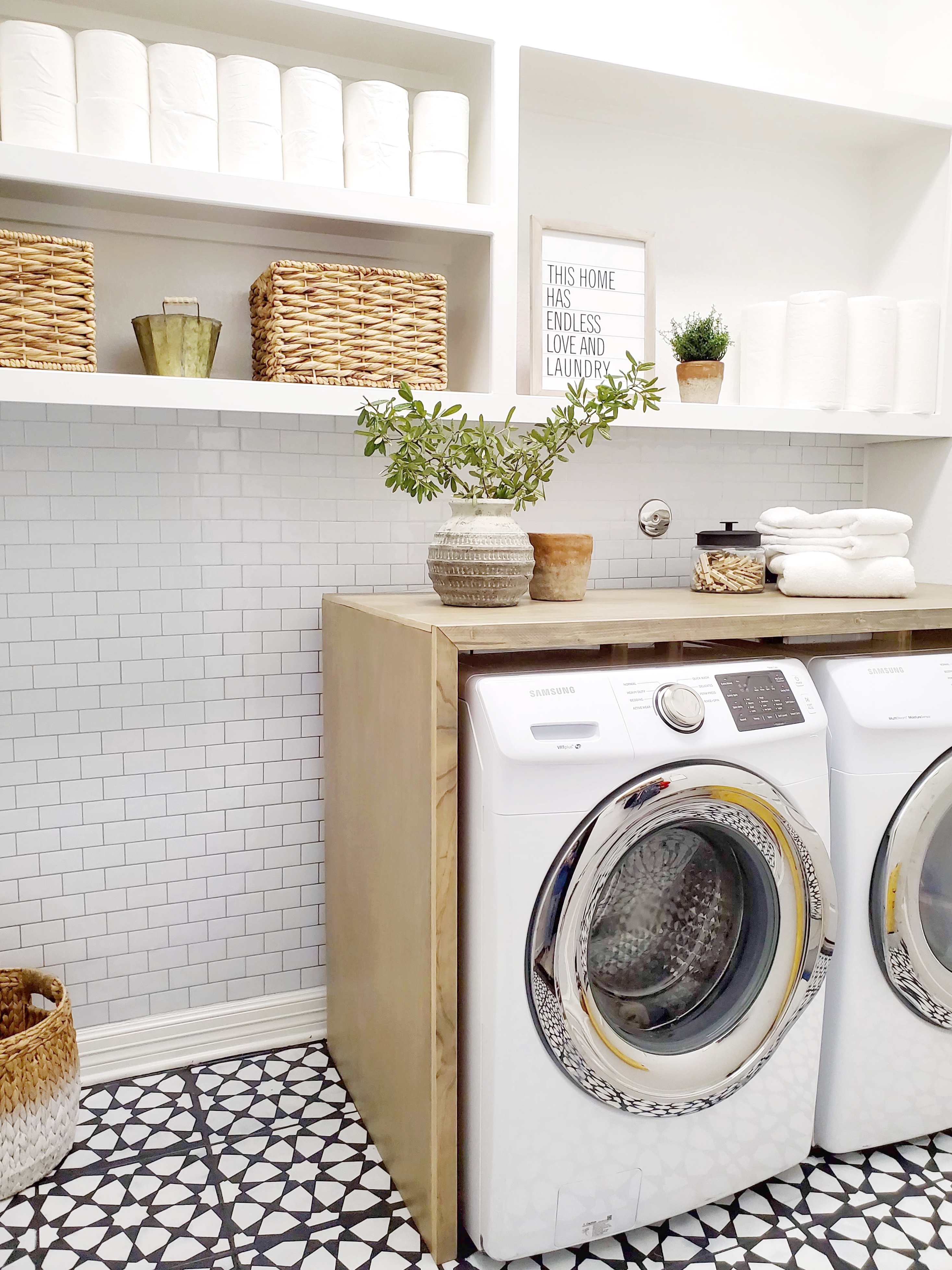Easy DIY Wallpaper Cut Out Idea for Beginners
Wallpaper is one of my favorite design tools that I use to create a focal point in my room designs. Whether it’s peel and stick wallpaper (removable wallpaper) or traditional wallpaper there are so many designs to choose from to create your own accent wall. In this post I’m going to show you a neat little trick that will take your regular wallpaper application to the next level. The best part is, you can create a custom cut out wallpaper design and completely change the look of a room.

I gave our playroom and flex space a makeover a few years ago and I used temporary wallpaper for an accent wall. This gorgeous floral design, Forest Fairies, by Rocky Mountain Decals was the perfect choice to create a secret garden look in the playroom. Its bold floral design adds so much charm to the room. My favorite part, however, is this fun little hack I did by adding cut outs of the wallpaper and extending them onto the door frame. This is a great way to add a whimsical touch to your wallpaper project. I’m going to show you exactly how I achieved this look and easy to follow steps.
Tools and Material Needed
- Utility Knife
- Wallpaper Roll
- Wallpaper Paste (if using unpasted wallpaper)
- Paint Roller (if using unpasted wallpaper)
- Tape measure
- Laser Level
- Wet Sponge or damp cloth
How to Install Cut Out Wallpaper

Step 1: Prep the Surface
If you have textured walls like I do (I have knockdown texture which isn’t rough but still has grooves) then you might want to skim coat your wall with joint compound before proceeding. This step makes sure the adhesive forms a good seal and it doesn’t rip off drywall when you’re trying to remove the wallpaper at some point down the road. I just rolled it on with a roller and did 2 coats. If you have any damage to drywall, make those repairs and spackle and sand any holes in the wall. Remove any outlet cover or cover for light switches from the wall as well.
Step 2: Choose the Starting Point
Once your wall is prepped you will choose a starting point to hang the first piece of wallpaper. Try to choose the most inconspicuous corner which will hide the final seam For example, a corner where a curtain is hung. If you start on an inside corner like I did, start about an inch or so on the adjacent wall so the seam isn’t directly on the crease where it’s more noticeable. If you choose a corner, measure an inch or two past the corner so the seam isn’t directly on the crease. Do a quick measuring check to ensure the seams of the next strips of wallpaper do not fall on any odd spots on the wall.
Step 3: Measure and Mark Panels
The next step is to measure the width of your wallpaper panel and mark that width with a pencil mark on the entire wall. This will help you figure out how many panels you need to cut. Draw guide lines for each panel using a straight edge ruler and your laser level.
Step 4: Cut First Wallpaper Panel
Measure the height of your wall and add 4″ to that number. This number is the length of your panels – we add two inches extra on both ends to accommodate for wiggle room. This allows you to cut excess wallpaper on both ends to give a clean edge. Cut panels using an xacto knife (if you buy the kit I recommend it comes with one and extra blades) or a sharp blade.
Step 5: Activate/Apply Glue
For pre-pasted wallpaper lay your panel front side down on a flat surface. Dip your roller in a bowl of clean water and roll over the back of the paper to wet completely. Leave no dry spots! If you’re using unpasted wallpaper you would just roll wallpaper adhesive onto the back using a paint roller. No water needed. If you’re using peel and stick wallpaper or temporary wallpaper you would just peel off the backing in small sections and skip to step 7.
Step 6: Book Wallpaper
To book the wallpaper, fold over both ends to meet in the middle and press down. This is done to ensure the glue gets time to activate and moisture disperses evenly. Wait 2-3 minutes before taking the panel up to install the wallpaper.
Step 7: Apply to Wall
Take your first strip of wallpaper to the wall and unroll the top half of the paper. Start pasting from 2″ above the wall (remember we measured 2″ extra from the top and bottom?) this is just an estimate you don’t have to measure. Use a level to make sure it’s going straight down (I used my laser level as a reference) Smooth it onto the wall using the smoothing tool in the kit and your hands. You can lift up the paper to fix any mistakes or air bubbles. This is where traditional wallpaper is extremely forgiving. You can remove and readjust the pasted side as many times as you like because the glue doesn’t dry for a while. Smooth it down all the way until you get to the bottom and then use your xacto knife to make a clean cut at the bottom edge. Use the smoothing tool as a guide for your cut in a straight line.
Step 8: Next Strip and Clean Up
For the next panel repeat the previous steps, but this time make sure to align the pattern repeat to the first panel and leave no gap between the two panels and no overlapping either! Repeat the process until you get to the end of the wall. To trim off excess paper on the side, use the same cutting technique described. For peel and stick wallpaper you are done with the basic installation at this point. Take the wet sponge and clean off the excess paste on the wallpaper seams that might have spilled out. Get the top of the wall and the bottom of the wall and all seams. Dry with a clean cloth.
Step 9: Cut Out Design
This is the easiest way to take your basic wallpaper accent wall to the next level! For this to work you will need a botanical or floral pattern which has elements you can cut out. For example, I wanted to make it look like the flowers and leaves were growing out onto the double doors. I simply cut out the continuing design elements like leaves and flowers and stuck them onto the door in an organic pattern. The finished product is a custom wallpaper look with a whimsical feel. It’s kind of like making your own wall decals with wallpaper.
This technique of cutting out pieces from extra wallpaper can also be used to fix mistakes. I had one panel where the pattern didn’t line up and I just cut out the coordinating pieces and stuck them on to create a seamless look. Make sure you get the edges of the paper stuck properly so they don’t unravel. This one day project has been a great success and still looks good today!

If you’re looking for additional wallpaper FAQs and a more detailed visual tutorial for traditional wallpaper I have the perfect post for you:
For a hand painted DIY wallpaper look here is the perfect resource for you:











